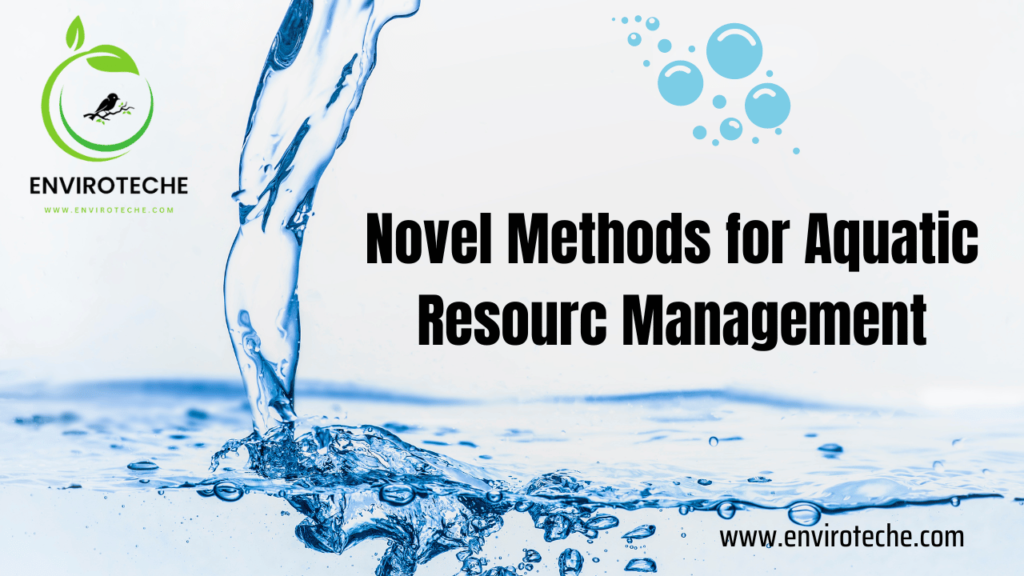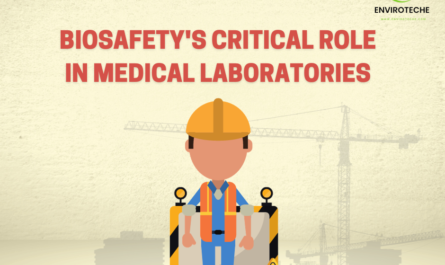
Sadia Mustafa1, Usman Shafqat1
1Department of Environmental Sciences, Government College University Faisalabad
Introduction:
The systematic and sustainable management of water-based ecosystems, such as oceans, rivers, lakes, and wetlands, to ensure their conservation, protection, and optimal use is referred to as aquatic resource management. It entails the responsible stewardship of these valuable resources, taking into account their ecological, economic, and social importance. Because of the increasing challenges and complexities that these ecosystems face, innovative approaches to managing aquatic resources have become increasingly important. By embracing innovation, we can more effectively address pressing issues such as water pollution, overfishing, habitat degradation, and the effects of climate change.
This blog post will look at the various innovative approaches to aquatic resource management that are being used and highlight their importance in protecting these valuable ecosystems for future generations. It aims to raise awareness of the potential benefits of innovation and encourage stakeholders to embrace and support novel approaches to managing our aquatic resources in a sustainable manner.
Traditional and Innovative Approaches in Aquatic Resource Management:
Traditional practices in aquatic resource management have historically focused on exploitation and regulation to meet immediate resource needs. These practices include fishing quotas, fishing gear restrictions, and pollution control regulations. While traditional approaches have had some success in conserving specific resources, they frequently fail to address the complex and interconnected nature of aquatic ecosystems. The challenges associated with traditional approaches highlight the need for innovative and adaptive strategies that account for the complexity and interconnectedness of aquatic ecosystems while also taking into account the social and economic dimensions of resource management.
Innovative technologies have transformed aquatic resource management in recent years, providing valuable tools for monitoring, analysis, and decision-making. Remote sensing and satellite imagery have proven useful in large-scale water body monitoring, allowing for the detection of changes in water quality, the identification of pollution hotspots, and the monitoring of harmful algal blooms.
Artificial intelligence (AI) and machine learning techniques have allowed for the analysis of massive amounts of ecological data, allowing for the prediction of ecosystem behavior and assisting in informed decision-making. These technologies are being used to detect and combat illegal fishing, forecast fish migration patterns, and improve the design of marine protected areas. Sensor technologies have been integrated to monitor water quality parameters like temperature, pH, dissolved oxygen, and nutrient levels in real-time. This integration allows for the early detection of environmental changes and aids in the efficient management of water resources.
Drones with imaging and sampling capabilities have transformed aquatic resource monitoring by conducting aerial surveys and data collection. They are useful for habitat mapping, monitoring coastal erosion, and assessing the health of marine ecosystems. Furthermore, the introduction of autonomous underwater vehicles (AUVs) has expanded the scope of underwater exploration and data collection.
Collaborative Approaches in Aquatic Resource Management:
Collaborative approaches have emerged as viable strategies for addressing the complex challenges of aquatic resource management. Community-based resource management initiatives enable local communities to actively participate in decision-making processes by leveraging traditional knowledge and cultivating a sense of ownership and responsibility for their water resources. These initiatives promote ecological stewardship and the resilience of aquatic ecosystems by involving communities in monitoring, enforcement, and sustainable resource use.
Partnerships between the public and private sectors have also emerged as critical mechanisms for achieving sustainable fisheries and marine conservation. These partnerships promote responsible practices such as sustainable fishing techniques, habitat restoration, and eco-certification programs by combining the expertise and resources of governmental agencies, non-governmental organizations, and private enterprises. They contribute to the alignment of conservation goals and economic interests, ensuring the long-term viability of aquatic resources.
Collaborations between government bodies, research institutions, indigenous communities, environmental organizations, and industry representatives play an important role in integrated water resource management. These collaborations facilitate the development and implementation of comprehensive management plans that take into account ecological, social, and economic factors by encouraging dialogue and cooperation among diverse stakeholders. Engaging indigenous communities, which often have deep knowledge and cultural ties to aquatic resources, is critical for effective resource management.
Innovative Policy and Governance Frameworks:
Innovative policy and governance frameworks that address the dynamic nature of aquatic environments and integrate diverse perspectives are critical for effective aquatic resource management. Adaptive management strategies acknowledge the inherent variability and uncertainty in aquatic ecosystems and encourage decision-making flexibility.
Adaptive management, which continuously monitors and evaluates outcomes, enables the adjustment of management approaches based on real-time data and feedback, ensuring that strategies remain responsive to changing conditions. Payment for ecosystem services and market-based approaches provide novel ways to encourage conservation and sustainable resource use. These approaches acknowledge the economic value of ecosystem services such as water purification and coastal protection and develop financial mechanisms to ensure their preservation.
By putting a monetary value on these services, stakeholders are encouraged to invest in their preservation, resulting in better management outcomes. Furthermore, it is critical to incorporate traditional ecological knowledge into policy-making processes in order to promote inclusive and sustainable management practices. Indigenous and local communities traditional ecological knowledge provides invaluable insights into the functioning of ecosystems, seasonal patterns, and resource abundance.
Benefits and Potential Challenges:
Innovative approaches to aquatic resource management provide numerous benefits for achieving long-term and effective conservation results. For starters, these approaches allow for more accurate and comprehensive monitoring of aquatic ecosystems, as well as real-time data and insights for informed decision-making.
Managers can gather detailed information on water quality, habitat health, and species distributions by utilizing technologies such as remote sensing, AI, and sensor networks, leading to more targeted and evidence-based interventions. Furthermore, innovative approaches encourage adaptive management, which allows for flexible and responsive strategies that can adapt to changing environmental conditions. This improves aquatic ecosystem resilience and their ability to withstand and recover from disturbances.
Furthermore, collaborative approaches encourage stakeholder engagement, allowing for knowledge sharing, capacity building, and inclusive decision-making processes. Innovative approaches foster a sense of ownership, collective responsibility, and shared benefits by involving local communities, indigenous groups, government agencies, and industry stakeholders. Despite these advantages, there may be challenges and barriers to implementing innovative approaches.
Conclusion:
The exploration of novel approaches to aquatic resource management is critical for addressing the complex challenges confronting our water-based ecosystems. Traditional approaches have limitations, and the incorporation of innovative technologies, collaborative initiatives, and ecosystem-based management frameworks can significantly improve our ability to conserve and utilize aquatic resources in a sustainable manner.
Improved monitoring capabilities, adaptive management strategies, increased stakeholder engagement, and the incorporation of traditional ecological knowledge are all advantages of innovation. However, in order to fully realize these benefits, stakeholders must embrace and support aquatic resource management innovation.
This necessitates investing in R&D, fostering partnerships and collaborations, encouraging knowledge sharing, and creating an enabling policy and regulatory environment. All stakeholders, including government agencies, local communities, industry, and civil society, must recognize and actively participate in the implementation of innovation. By doing so, we can protect the health and resilience of our aquatic ecosystems, ensure resource sustainability, and ensure a better future for both current and future generations.
Check Other Schlorships:


Very informative to ensure the better future of both present and future generation.. Keep it Up 👍
Very informative…keep it up..